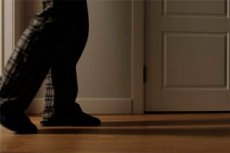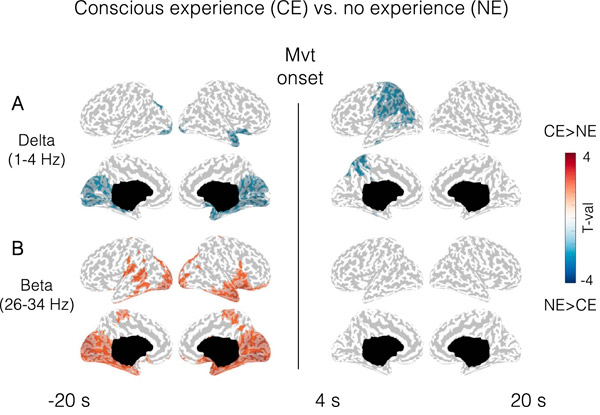New publications
Parasomnia: What's going on in the sleepwalker's brain?
Last reviewed: 02.07.2025

All iLive content is medically reviewed or fact checked to ensure as much factual accuracy as possible.
We have strict sourcing guidelines and only link to reputable media sites, academic research institutions and, whenever possible, medically peer reviewed studies. Note that the numbers in parentheses ([1], [2], etc.) are clickable links to these studies.
If you feel that any of our content is inaccurate, out-of-date, or otherwise questionable, please select it and press Ctrl + Enter.

Researchers at the Netherlands Institute of Neuroscience have begun to study a complex question: what happens in the brain of a person who may be "stuck" between sleep and wakefulness?
Most of us think of a sleepwalker as someone who walks around unconsciously with their eyes closed and their arms outstretched. In reality, sleepwalkers typically walk around with their eyes open and are able to interact with their surroundings. Sleep scientists call this abnormal sleep behavior " parasomnia," which can include simple actions like sitting up in bed looking confused, but also more complex ones like getting out of bed, moving around, or screaming with a frightened expression.
Although this type of parasomnia is more common in children, approximately 2-3% of adults experience them regularly. Parasomnias can be distressing for both the sleeper and their bed partner. “Sufferers may harm themselves or others during episodes and later be deeply ashamed of their actions,” explains Francesca Siclari, director of the Dream Lab.
Studying Parasomnias in the Lab Siclari and her team conducted the study to better understand what's going on in the brain during parasomnias. "It was previously thought that dreams only occurred during one stage of sleep: REM sleep. We now know that dreams can occur during other stages as well. Those who experience parasomnias during non-REM sleep sometimes report dream-like experiences, and other times seem completely unconscious (i.e., on autopilot)."
To understand what drives these differences in experiences, Siclari and her team examined the experiences and brain activity patterns of parasomnia patients during non-REM sleep.
Measuring brain activity during a parasomnia episode is not an easy task. The patient must fall asleep, experience the episode, and record brain activity during movement.
"There are very few studies right now that have overcome this. But thanks to the multiple electrodes we use in the lab and some specific analysis techniques, we can now get a very clean signal even when patients are moving," Siclari explains.
Siclari's team can induce a parasomnia episode in the lab, but it requires two consecutive recordings. During the first recording, the patient sleeps normally. Then there is a night when the patient is allowed to sleep only in the morning after a sleepless night.
During this recording, as the patient enters a deep sleep phase, they are exposed to a loud noise. In some cases, this results in an episode of parasomnia. After the episode, the patient is asked what was on their mind.
In 56% of episodes, patients reported having dreams. "Often this involved an impending disaster or danger. Some thought the ceiling was going to collapse. One patient thought he had lost his child, looked for him in bed, got up in bed to save ladybugs sliding down the wall and falling," Siclari explains.
"In 19% of cases, patients experienced nothing and simply woke up to find themselves doing something as if in a trance." Another small proportion reported experiencing something but could not remember what.

Based on these three categories, Siclari's team compared the measured brain activity and found clear parallels. "Compared to patients who experienced nothing, patients who dreamed during the episode had brain activity similar to that seen during dreams, both before and during the episode," Siclari adds.
"Whether a patient is completely unconscious or dreaming seems to depend on the patient's state at the time. If we activate the brain when they are already likely to be dreaming, they seem to be able to 'do something' from that activation, whereas when their brain is largely 'deactivated', simple actions occur without distress.
"Interestingly, patients almost never mention the sound that triggered the parasomnia episode, but talk about some other impending danger. The louder we make the sound, the higher the chance of triggering an episode."
Next Steps While this is just a first step, there is plenty of scope for follow-up research. "Ideally, it would be great to set up a sleep recording system for more people at home, where they might also have more complex and frequent episodes. We would also like to repeat this kind of research in people who experience parasomnias during REM sleep. By measuring brain activity like this study, we hope to eventually better understand which neural systems are involved in different types of parasomnias," Siclari says.
While much research remains to be done, Siclari is confident that her work can provide valuable insights. "These experiences are very real for patients, and many have already felt relief in sharing them with us. Like previous studies, our study helps them understand what they are going through, which is educationally valuable.
"In addition, our work may contribute to the development of more specific drug interventions in the future. Parasomnias are often treated with non-specific sleep medications, which are not always effective and can have side effects. If we can identify which neural system is working abnormally, we may eventually be able to try to develop more specific treatments."
The study is published in the journal Nature Communications.
